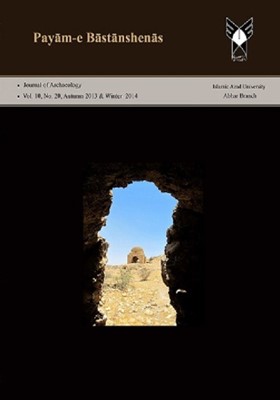New Evidences of Late Bronze and Iron Age in Qaleh Tepe of Abhar
Subject Areas : Prehistoric ArchaeologyAmir Sadegh Naghshineh 1 , Bahnam Ghanbari 2 , Babak Alaei 3
1 - Assistant Professor, Department of Archaeology, Islamic Azad University, Abhar Branch, Abhar, Iran.
2 - M.A. in Archaeology, Department of Archaeology, Islamic Azad University, Abhar Branch, Abhar, Iran.
3 - M.A. in Archaeology, Department of Archaeology, Islamic Azad University, Abhar Branch, Abhar, Iran.
Keywords: Iron age, Bronze Age, Qaleh Tepe, Gray Ware, Poly Chrome Ware, Abhar Roud Basin,
Abstract :
Abhar Roud Baisn which is placed in the east of Zanjan precinct is not exactly recognized. This precinct is across the most important natural road which connects North West to central north. Qaleh Tape is one of the significant archeological sites which are placed in the south of this river. In recent years most of this Tape is destroyed. As a result of archeological investigation in this precinct many traces related to different period were found. One of the most important traces were regarding to clays related to Iron Age. This evidence show that people related to Iron Age period lived in this Tape. Finding clays named Poly Chrome which belongs to Bronze period showed that there was a connection between Qaleh Tape and eastern area and Qazvin in this period. Finding gray clays concerned with Iron Age in this precinct demonstrated that this place was used as a place for living from new Bronze period to Iron Age. Finding some intact clay belong to Iron Age I and a Poly Chrome container related to new Bronze Age showed that at the end of the Bronze period and at the beginning of the Iron Age this Tape was used as a cemetery. Finally, based on the other finding of this Tape related to new Bronze Age and Iron Age we can come to a conclusion regarding to cultural relations of Abhar Roud precinct people with adjacent area. Probably, Latrine Abhar precinct was the best connection way from central north to west and west north.
_||_


